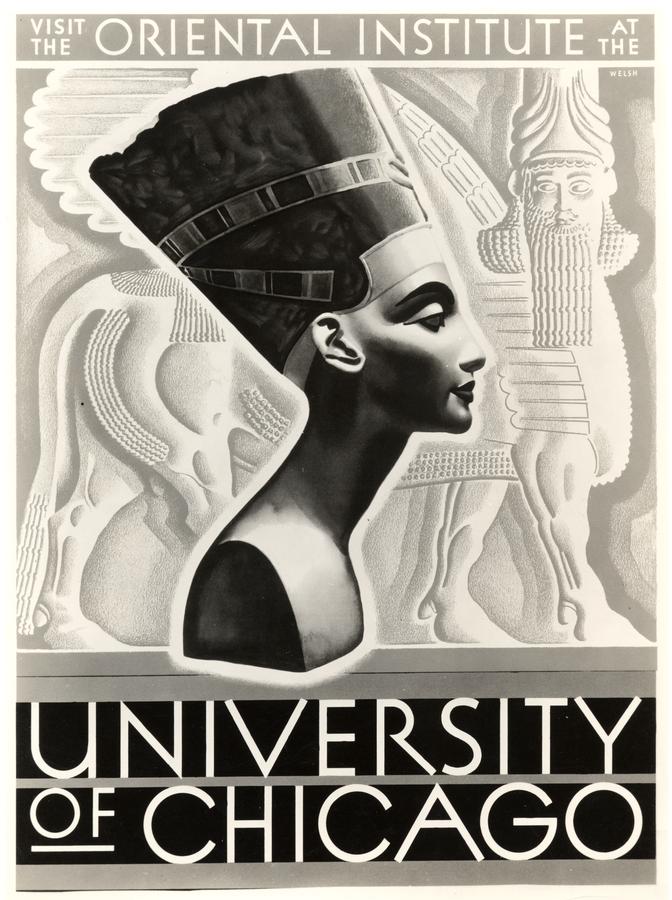By Sarah Miller-Davenport, AM’08 |
Carved into a wall of Egypt’s Luxor Temple, a blurred tableau of religious offerings—its sandstone contours eroded after millennia of abuse from sand and salt—comes into sharp relief through a painstaking operation involving photography, draftsmanship, and scholarly deliberation.
A crumbling piece of plaster excavated from northern Iraq, showing the shadowy outline of three standing figures, metamorphoses into a portrait of Assyrian King Sargon II communing with a deity. That scene is then incorporated into an artist’s imagined replication of an intricate wall painting. In the process, the original object is transformed from rubble to living witness, and what began as a shard of a lost culture is elaborated into a rich narrative of a knowable past.
The work of conjuring images like these is as much a part of archaeology as unearthing the objects themselves. Since the 19th century, reconstructed images of the ancient Middle East have been reproduced in texts, exhibitions, and popular culture. But rarely is the accuracy of those images questioned in a public venue. An exhibit at the Oriental Institute, Picturing the Past: Imaging and Imagining the Ancient Middle East, showcases the role archaeologists and artists play in creating popular perceptions of ancient history. The exhibit, which runs through September 2, illuminates how reconstructing ancient sites and artifacts relies not only on objective scientific information but also on hypothesis and speculation. One of its central questions is: how do we know what we know? It’s a problem that stalks all scholarly inquiry, but perhaps especially the study of the ancient past, whose evidentiary remains are fragmentary...The article neglects to mention that the catalogue of the exhibition is available for free download as well as for purchase:
- Picturing the Past: Imaging and Imagining the Ancient Middle East
- Edited by Jack Green, Emily Teeter, and John A. Larson
- Oriental Institute Museum Publications 34
- Chicago: The Oriental Institute, 2012
- ISBN-10: 1-885923-89-9
- ISBN-13: 978-1-885923-89-9
- Pp. 184; 168 illustrations
- $29.95
See the chronicle of news about the Oriental Institute.





 Stumble It!
Stumble It!


No comments:
Post a Comment